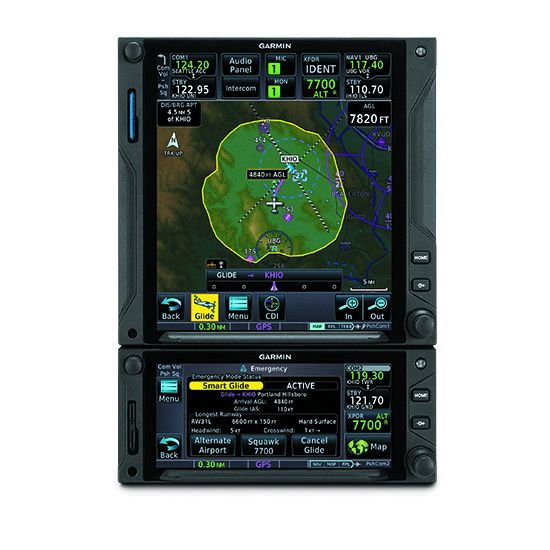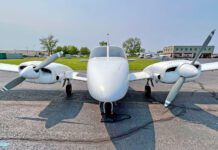MORE ON SMART GLIDE
I’m a big fan of Garmin avionics and wonder if Garmin’s Smart Glide engine-out utility has access to oil pressure data, which is critical to determining the glide ratio in aircraft with a controllable pitch propeller.
In my Bonanza, glide ratio with a catastrophic engine failure changes from 10:1 to 6.5:1 if oil pressure is lost and the prop cannot be moved into a low drag setting (around 800 FPM versus 1500 FPM descent at best glide). I suspect it’s not a feature, as Smart Glide is listed as an option for GTN Xi-equipped aircraft. But, if an aircraft also has a Garmin EIS engine monitor installed (with oil pressure sensing), display of a range ring appropriate for the lower glide ratio could be triggered.
This is a big safety issue, as Garmin doesn’t want a pilot to think he can make it to an airport that is out of range. Doing so is a setup for a stall/spin.
Justin Graff – via email
Garmin responded that it would be important to enter the glide ring ratio with the engine stopped and the propeller blades in flat pitch. There’s a glide range ring settings field in the GTN Xi configuration page, and we suggest owners work with the shop doing the configuring to get the numbers right.
SHORT PILOTS IN MOONEYS
I owned a 1962 Mooney M20C for about 10 years and had no trouble reaching the foot pedals at 5-feet 4-inches tall. Now I’m looking at a 1992 Mooney M20J MSE and am 5-feet 3-inches tall, with a hip distance to a flat foot at 31 inches. Is this an adequate leg length for turns and brakes?
If not, are there risers that can be attached to the rudder pedals?
Edward Drum – via email
It could be close. We suggest trying a Mooney M20J out to see how comfortable you are with braking and rudder operation.
Lasar Inc. in Rancho Murieta, California, (www.lasar.com) offers a $357 rudder pedal extension kit that provides a 3-inch extension.
OLD PILOTS AND INSURANCE
I thought Larry Anglisano’s insurance for seniors article in the April 2022 issue of Aviation Consumer was something to worry about. I have always thought that older pilots had better judgment and are more careful than the youngsters.
However, I did not appreciate the cartoon figure of the pilot with a walker. Insurance agents and officials read Aviation Consumer and the image might poison the water.
Alan Maurer – via email
Don’t worry, the waters were already poisoned long before we ran Ben Bishop’s drawing of ol’ Hal. We’ve had plenty of discussions with insurance executives who are we’ll aware that some senior pilots (and inexperienced younger ones, too) have no business being behind the controls of an aircraft.
However, the point of the cartoon and the caption that tagged along was meant to drive our point: Not all senior pilots are equal, and insurers need to stop judging a pilot’s risk simply by age. One senior pilot (insurers use age 70 as “senior” status) may be unfit to fly—both physically and mentally—yet another can complete a triathlon with athletes half their age. We know plenty of both, and will continue to urge insurers to look beyond age when writing and refusing coverage.
USED MARKET CRASH?
I absolutely love Aviation Consumer and in particular, the Used Aircraft Guide. It’s a huge resource for those of us navigating the used market. I can tell by your body language in recent reports that the pricing surge (unrealistic, perhaps) in the current market is headed for a crash, especially when banks are loaning money on $150,000 old Skyhawks. I almost bought one, but decided to sit it out in hopes of scoring one in a crashed market.
Vince Howard – via email





